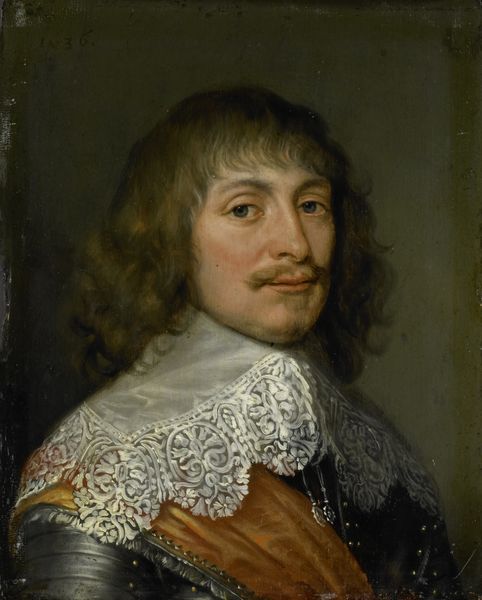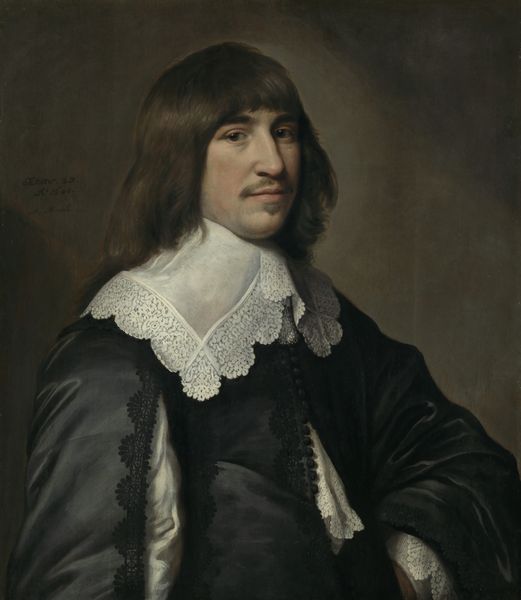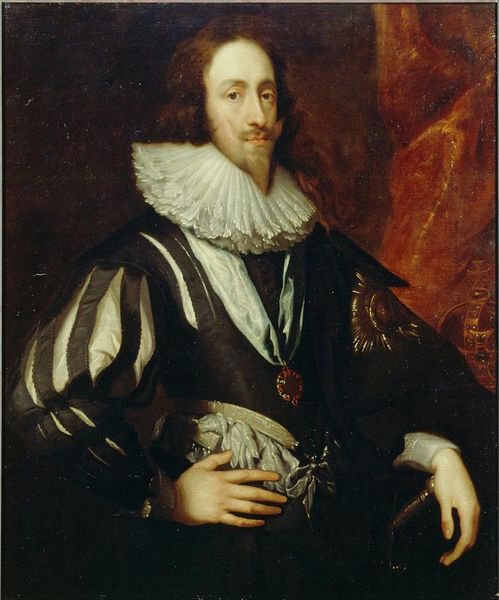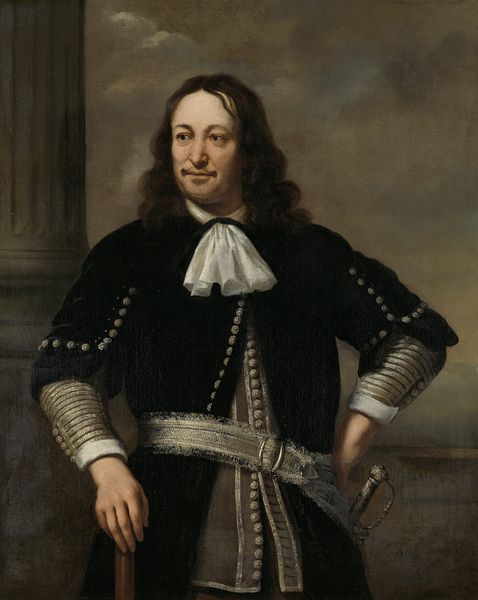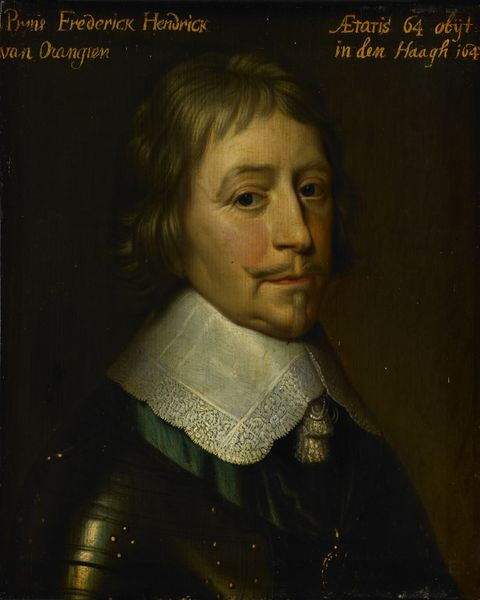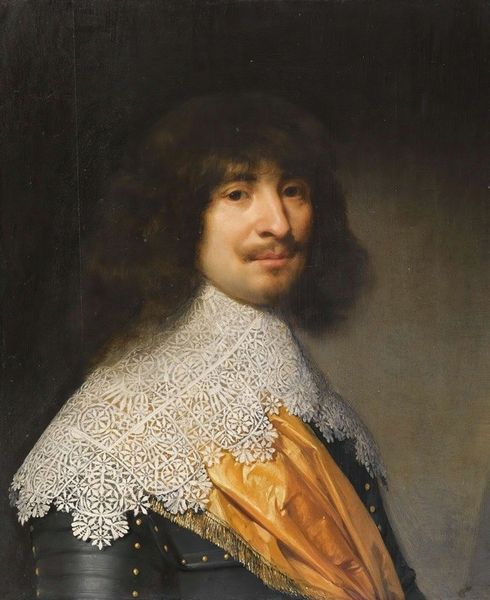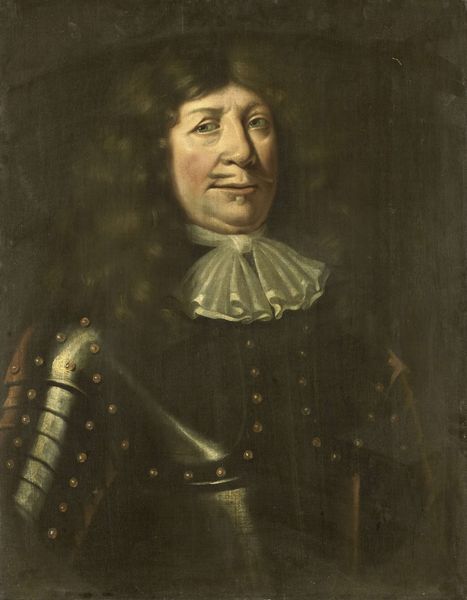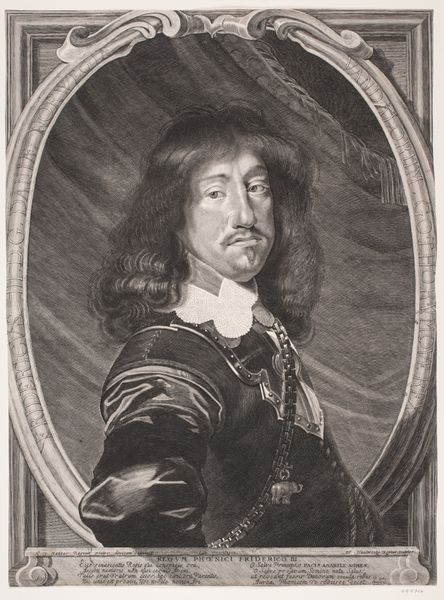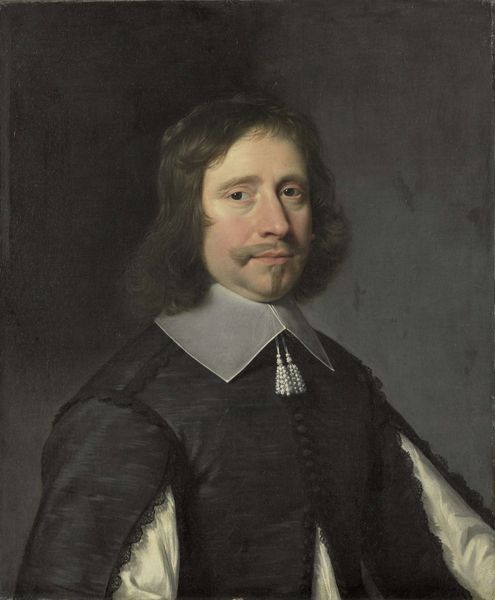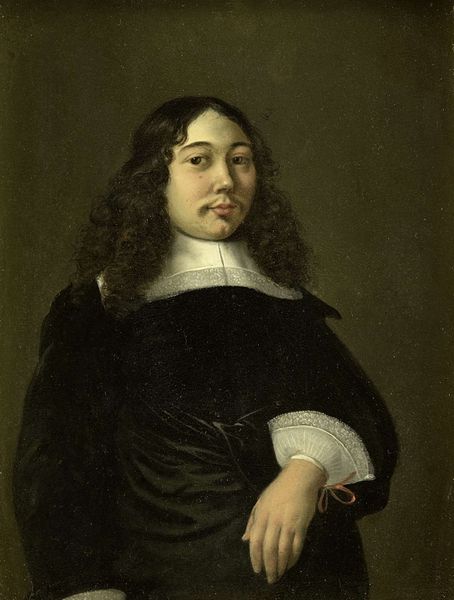
Dimensions: support: 435 x 318 mm frame: 565 x 470 x 60 mm
Copyright: CC-BY-NC-ND 4.0 DEED, Photo: Tate
Editor: Here we see Cornelius Johnson's "Portrait of an Unknown Gentleman," currently housed at the Tate. I'm struck by the sitter's direct gaze and the stark contrast of the white lace collar against the dark background. What can you tell me about the societal context surrounding portraiture like this? Curator: Well, portraits such as these were instrumental in shaping identities and conveying social status during the 17th century. Johnson, of course, was favored by the elite. Consider, the sitter’s attire, the lace, and the red sash, how would this contribute to his public persona? Editor: It definitely speaks to wealth and perhaps some level of military or civic importance, considering the sash. It's almost like a carefully constructed performance of power. Curator: Precisely! The portrait becomes a vehicle for projecting a carefully curated image, reinforcing the sitter's position within the social hierarchy. Editor: That’s fascinating. I never thought about portraits in quite that way before. Curator: Understanding that art can be a tool for social positioning is key to interpreting portraits like these.
Comments
tate 7 months ago
⋮
http://www.tate.org.uk/art/artworks/johnson-portrait-of-an-unknown-gentleman-t00744
Join the conversation
Join millions of artists and users on Artera today and experience the ultimate creative platform.
tate 7 months ago
⋮
This gentleman wears the crimson sash of the Order of the Bath but he has not been identified further. Like its paired portrait nearby, presumably of the sitter’s wife, this one bears Johnson’s monogram ‘C.J.’ and the date 1629. Three years later, Anthony van Dyck settled in Britain: his work was to influence Johnson’s style profoundly. These two earlier portraits, however, demonstrate Johnson’s characteristically intimate and pensive work, combined with the softened, rather brushy, technique of his mid-career. Gallery label, February 2016
